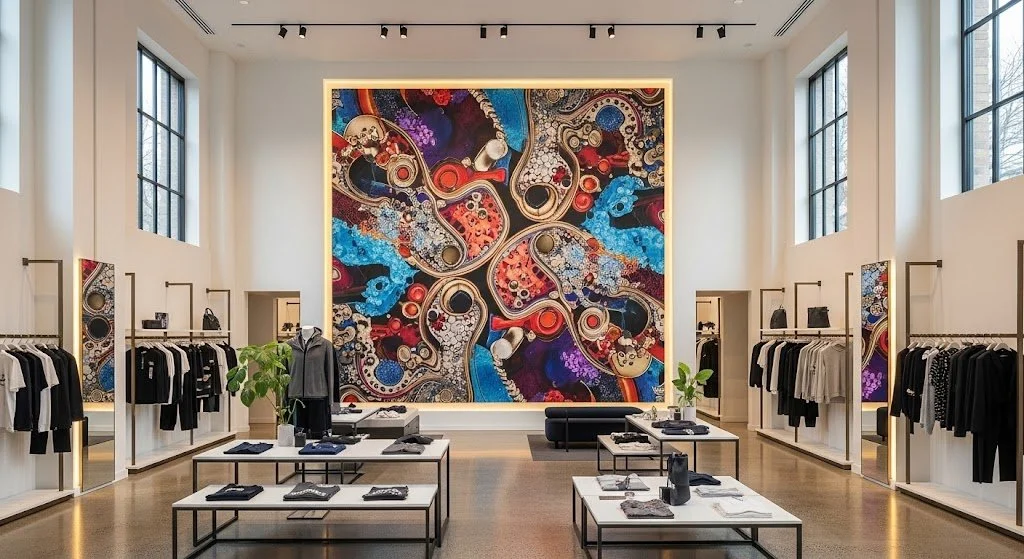Blog Articles
Glass is the defining material of contemporary architecture, being transparent, elegant, and endlessly versatile. It opens spaces, invites light, and fosters connection. Yet, as interiors have evolved to embrace openness, new challenges have emerged.
Environmental graphics are more than just decoration—they're a strategic design solution that elevates both the visual appeal and functional experience of a space. From corporate interiors and retail environments to healthcare facilities and residential amenity spaces, these large-scale visual elements turn ordinary surfaces into immersive, branded experiences.
In the hospitality industry, where first impressions and guest experience define success, architectural finish films have become a smart, sustainable alternative to traditional renovations. At APG Design Studio, we work with industry-leading brands like 3M™ Di-Noc™, Reatec, and Belbien to help hotels, resorts, and restaurants transform interior environments without costly or disruptive construction.
Understanding how modern buildings can cut soaring energy bills and maintain comfortable indoor climates has become crucial. Sun Control Window Films offer a proven solution by filtering infrared radiation and reducing solar heat gain without compromising natural light. Through targeted SHGC reduction with window film, facility managers witness dramatic energy savings, lower HVAC costs, and enhanced occupant comfort. This article explores the science, data, and real-world case studies behind sun control films, guiding architects and building owners toward smarter energy decisions.
Windows can either optimize comfort and energy efficiency or become sources of glare, heat gain, and UV damage. Sun Control Window Films provide a retrofit glazing comparison for buildings that aren’t ready for full window replacements. By evaluating window film vs low-e glass and considering the benefits of solar screens, facility managers and homeowners gain clarity on performance, cost, and aesthetics. This guide dissects how sun control films, solar screens, and Low-E glass stack up across key metrics, helping decision-makers choose the right solution for any project.
Window environments often face challenges from solar heat gain, harmful UV exposure, and disruptive glare. Sun Control Window Films provide an effective retrofit solution for existing glazing systems, transforming plain glass into a multifunctional component of the building envelope. These engineered polyester films integrate advanced coatings—metalized layers, nano-ceramic particles, or dyed film layers—to selectively filter infrared light, ultraviolet rays, and visible light, delivering enhanced comfort, energy savings, and interior protection.
Reatec architectural film is a high-performance, decorative vinyl product designed for surface transformations in commercial settings. It offers over 800 patterns that replicate wood grains, metals, stones, and abstract textures without demolition or significant downtime. This film adheres to substrates via a specialized adhesive system that allows air to escape, minimizing bubbles and ensuring a smooth finish. Professionals value its durability under heavy traffic and its resistance to scratches, making it ideal for busy office corridors and common areas.














For many retailers, holidays are the most critical time of year to drive foot traffic, boost sales, and strengthen brand recognition. But with every window glittering in lights and every store shouting “SALE,” it takes more than decoration to capture attention.